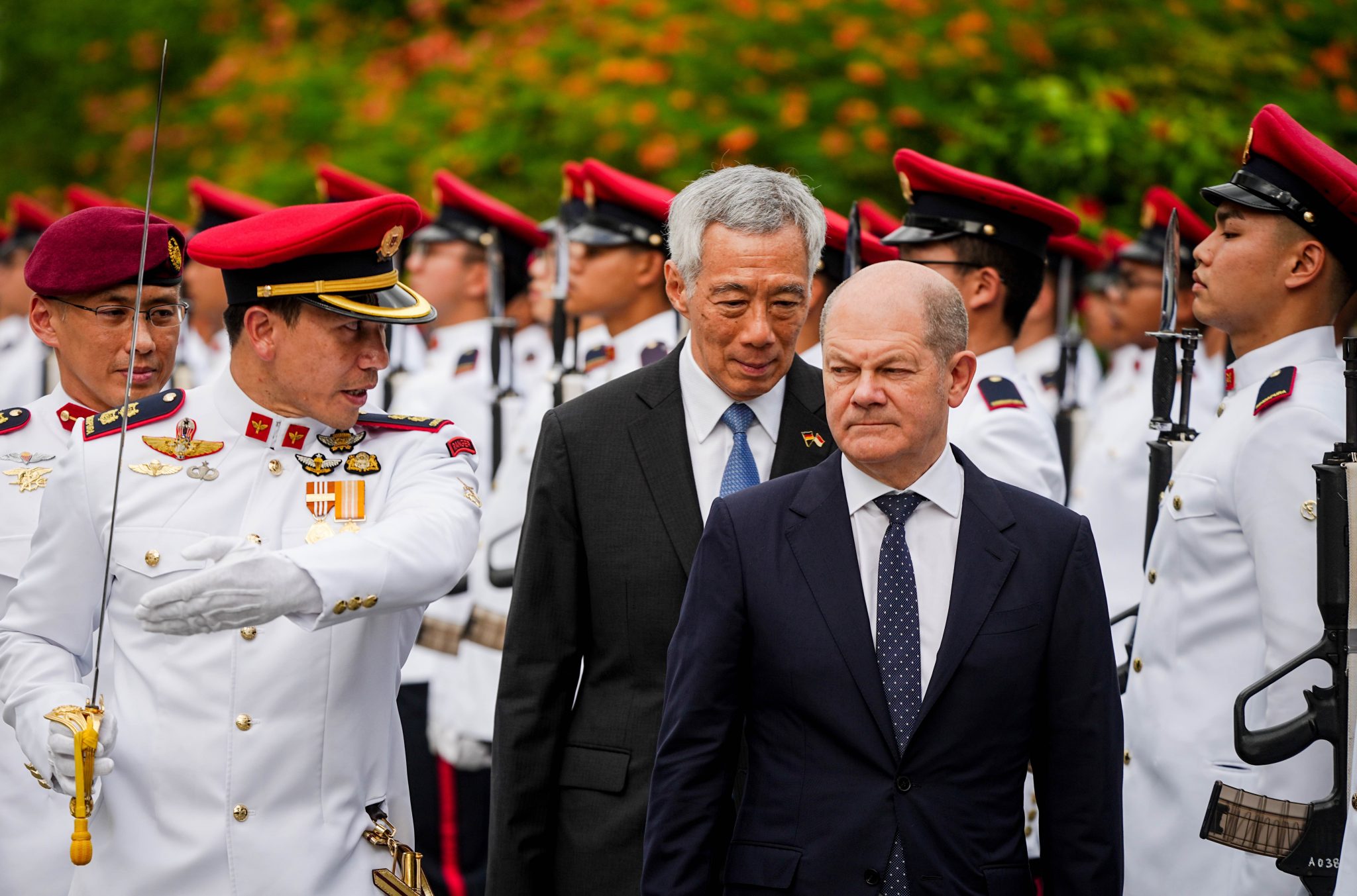Author: Abdul Rahman Yaacob, ANU
While military deterrence and diplomacy are often cited as the two pillars of Singapore’s defence strategy, a critical yet overlooked third pillar is the importance of the city-state’s relations with major western powers.
These relations have been crucial to strengthening Singapore’s military deterrence capabilities and adding weight to its diplomatic manoeuvres. For example, the bilateral relationship with the United States plays a significant role in Singapore’s security. As explained by Tim Huxley in his book Defending the Lion City, the Singapore–US security relationship resembles a quasi-alliance despite the lack of a mutual defence treaty that explicitly requires the United States to defend Singapore.
Singapore is geographically small and has experienced historical antagonism with its two closest neighbours, Malaysia and Indonesia. Singapore’s political leaders have long considered close relations with Western powers as a counterweight against threats from within its immediate geography and from outside Southeast Asia. Archival material demonstrates relations with major Western powers have been a significant factor underpinning Singapore’s security since its political leaders proposed separation from Malaysia in July 1965.
One positive outcome of close relations with Western powers is diplomacy. The Western powers have supported Singapore’s security at critical events in the country’s history and have helped shape its strategic environment.
The earliest recorded Western diplomatic contribution to Singapore’s security was during the barter trade crisis from October to December 1965, when Malaysia threatened military action against Singapore. Diplomatic interventions from Australia, the United Kingdom and New Zealand — including their threats to withdraw military personnel assisting Malaysia during the konfrontasi against Indonesia — averted a potentially catastrophic outcome for Singapore. This was especially important given Singapore’s lack of military capabilities at the onset of independence.
Closer relations with the United States during the 1970s enabled Singapore’s political leaders to leverage Washington to influence other ASEAN member states, particularly Indonesia, to steer ASEAN towards closer economic integration. Then Singaporean prime minister Lee Kuan Yew regularly turned to the United States for assistance to convince former Indonesian president Suharto of the benefits of ASEAN’s economic integration to promote regional stability.
Accessing Western military intelligence is another area where Singapore has benefited from its close relations with Western powers. Declassified documents reveal during the first half of the 1970s, the Australian, New Zealand and United Kingdom (ANZUK) forces based in Singapore shared intelligence of interest with the Singaporeans. The ANZUK Joint Intelligence Committee (JIC) regularly updated Singapore’s intelligence service, the Security and Intelligence Division (SID), on the Soviet Union’s submarine activities in regional waters. During this period, Singapore’s navy was small and lacked the equipment to monitor or track submarine activities in regional waters.
In the second half of the 1970s, declassified American documents suggests the United States shared intelligence on the Soviet Union’s maritime activities in the South China Sea and the Indian Ocean with Singaporean intelligence through US surveillance flights operating from the Tengah airbase in Singapore.
Closer defence relations with the United States throughout the 1980s enabled Singapore to acquire advanced American weapon platforms and capabilities. Washington provided Singapore with aircraft such as the F-16 and the E-2C Airborne Early Warning (AEW) to strengthen its air defence against a perceived threat from Vietnam and the Soviet Union. The sale of E-2C Hawkeye to Singapore was significant given that, in that period, the United States only offered the Hawkeyes to its allies, Israel and Japan.
The United States trained Singaporean pilots on ‘anti-Soviet manoeuvres’ to counter tactics typically used by the Soviet bloc and influenced air forces during the last decade of the Cold War. This privilege was not afforded to other non-communist Southeast Asian states. The advanced weapons systems, equipment and training Washington provided allowed Singapore to develop a military edge over its neighbours and meet the threats from Vietnam and the Soviet Union.
Close relations with major Western powers continue to be critical to Singapore’s defence strategy, especially in the development of military deterrence.
One example is the exports to Singapore of American-made HIMARS, a light multiple rocket launcher platform that has proven itself in the Ukrainian battlefields. US engines run Singapore-made armoured vehicles such as the Bionix, Bronco and Terrex. Another example would be the growing reliance on German-made weapons and equipment. Germany allowed Singapore to train its armoured units with German-built Leopard-2A4 tanks on its soil. In the maritime domain, German Type-218 submarines enabled the Singaporean navy the capability to operate longer underwater with a larger payload. The Germans also supplied diesel engines for Singapore-built Independence-class warships.
The sale of American-made F-35B stealth combat aircraft to Singapore reflects the importance of close relations with a major Western power, given that attempts by Indonesia and Thailand to purchase similar aircraft have not been successful. The F-35s will enable Singapore to maintain air superiority even as other Southeast Asian states are modernising their air forces.
In the foreseeable future, Singapore will continue to rely on close relations with Western powers as counterweights to actors threatening its security and survival. Their diplomatic support, advanced military technology, armaments and intelligence will be crucial for Singapore to deal with any future security threat swiftly and decisively.
Abdul Rahman Yaacob is a PhD candidate with the National Security College (NSC) at The Australian National University (ANU) and was a Teaching Fellow at the Australian Defence College between 2020 and 2022. He is also the author of Towards a ‘Forward Defence’ for Singapore: Revisiting the Strategy of the Singapore Armed Forces, 1971-1978, which was recently published in the British Journal for Military History.





















Discussion about this post